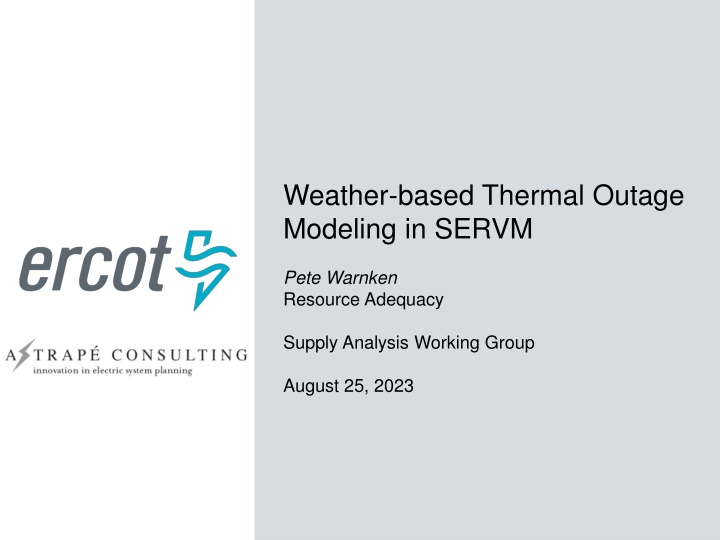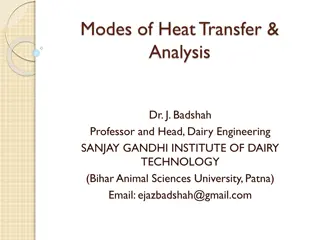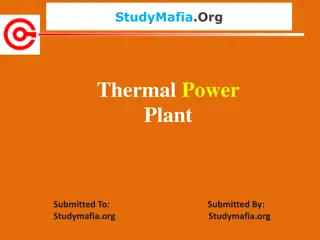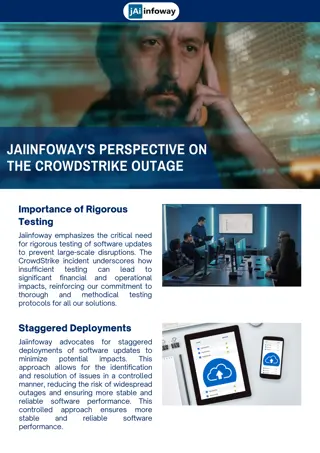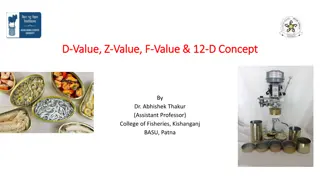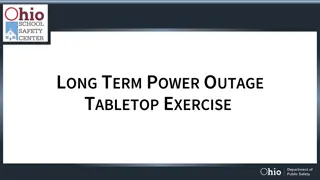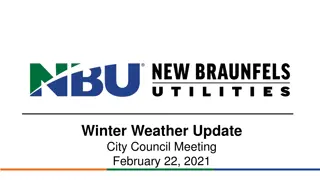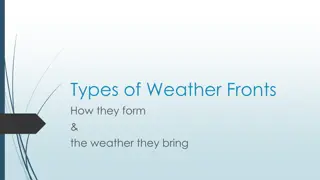Weather-Based Thermal Outage Modeling in SERVM: Analysis and Insights
This detailed report delves into the weather-based thermal outage modeling conducted in SERVM, focusing on analyzing unplanned outages in relation to temperature variations across different weatherization zones. The study examines the impact of weather conditions on generator outages, models unit-specific outage probabilities, and considers the efficacy of weatherization efforts in reducing weather-related outages. By presenting a systematic overview of the modeling process and outcomes, this analysis sheds light on the potential implications for resource adequacy and supply analysis within the ERCOT framework.
Download Presentation

Please find below an Image/Link to download the presentation.
The content on the website is provided AS IS for your information and personal use only. It may not be sold, licensed, or shared on other websites without obtaining consent from the author.If you encounter any issues during the download, it is possible that the publisher has removed the file from their server.
You are allowed to download the files provided on this website for personal or commercial use, subject to the condition that they are used lawfully. All files are the property of their respective owners.
The content on the website is provided AS IS for your information and personal use only. It may not be sold, licensed, or shared on other websites without obtaining consent from the author.
E N D
Presentation Transcript
Weather-based Thermal Outage Modeling in SERVM Pete Warnken Resource Adequacy Supply Analysis Working Group August 25, 2023
Modeling Process Overview Analyzed unplanned outages as a function of cold and hot temperatures by weatherization zones. Developed linear correlation trend lines for each zone relating wind chill temperature to an unplanned (forced) outage quantity. The trend lines account for outages experienced during Uri and other named storms (Elliott and Mara). Combined South and Coast zones into one zone since trend line differences are negligible. Converted the trend lines into incremental forced outage rate probabilities that are then mapped to each thermal unit These probabilities are applied on top of, and independently of, the logic used for modeling typical unplanned outages for each thermal unit. Typical unplanned outages are modeled probabilistically as random selection of mean time-to-failure (TTF) and time-to-repair (TTR) values from probability distributions. hypothetical example: at 10 wind chill for a given hour, a unit in the South weatherization zone has a 1% weather-related outage probability. 2 ERCOT Public
Modeling Process Overview Assumes that weatherization efforts reduce all weather-related unplanned outages by 85%; simulations with and without this weatherization assumption will isolate the impact. When excluding the 85% outage improvement factor, SERVM could yield unplanned outage magnitudes comparable to what happened during Uri; however, the probability is likely too small to produce that outcome given the number of simulations anticipated. 3 ERCOT Public
Modeling Process Overview Nearly all zones experience higher generator outages as temperatures decline Hot weather outages also modeled, but much smaller magnitude. 4 ERCOT Public
Modeling Process Overview This chart shows the relationship between thermal unplanned outages and temperature as an ERCOT-wide representation. In SERVM, unit-specific outages are modeled as a function of wind chill temperature by zone and outage probability. Actual outage events are also shown in the chart. 5 ERCOT Public
Unit-Specific SERVM Outage Modeling Logic 6 ERCOT Public
System-wide SERVM Outage Modeling Example Temperature 7 ERCOT Public
Firm Fuel Supply Service Modeling Approach The selected approach is to estimate temperature-based decreases in fuel limitation outages for units providing FFSS. Winter 2022-23 FFSS procurement amount was 2,940.5 MW. FFSS Resources represent 4.59% of the ERCOT gas fleet (2,940.5 MW divided by 64,130 MW). Construct a fuel limitation outages trend line similar to the one created for all outages (outages as a function of wind chill temperature) Assume that 4.59% of the fleet-wide outages implied by the trend line are avoided by procuring FFSS. This assumption translates into a ~125 MW improvement in outages at 14 degrees and ~50 MW improvement in outages at 25 degrees. Outage improvement is represented as a 125 MW perfect gas unit that provides a linear outage reduction improvement ranging from 50 MW to 125 MW as wind chill temperature decreases. 8 ERCOT Public
Firm Fuel Supply Service This chart shows the relationship between thermal unplanned outages and wind chill temperature as an ERCOT-wide representation, focusing on the fuel-related outages; actual fuel-related outage quantities are shown for the three named storms 9 ERCOT Public
